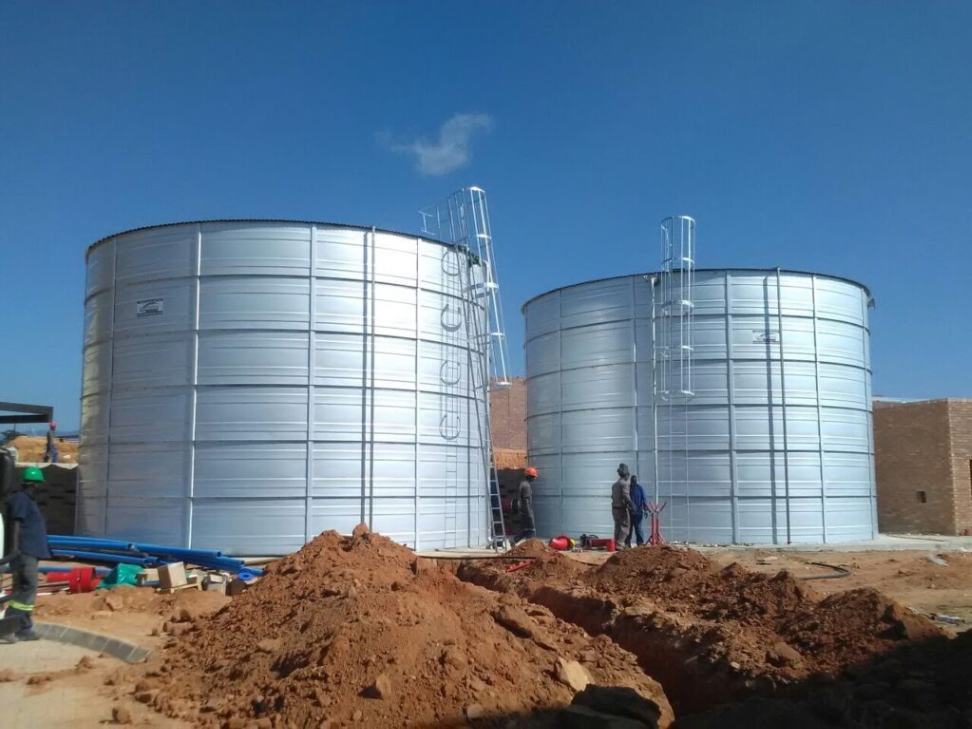Revolutionizing Water Storage: Sustainable Solutions for Conservation and Efficiency
Water is one of the most essential resources for life, yet the world is facing an alarming water crisis. According to the United Nations, nearly two-thirds of the global population experiences severe water scarcity at least one month a year.
Climate change, population growth, pollution, and inefficient water storage and management practices have exacerbated this crisis. To combat this, sustainable water conservation solutions are becoming more critical than ever. One such solution is the use of high-quality, durable plastic water tanks, which not only help in effective water storage but also contribute to sustainability by reducing water wastage and promoting efficient resource management.
The Problem: Water Wastage Due to Poor Storage Solutions
A significant amount of water is lost due to inefficient storage, particularly in traditional cement tanks. Cement or RCC (Reinforced Cement Concrete) tanks are widely used for water storage, but they come with inherent flaws. Over time, these tanks develop cracks and leaks, leading to substantial water loss. Additionally, cement tanks are prone to microbial growth and contamination, which affects water quality and makes them unsafe for consumption.
The construction of RCC tanks is also energy-intensive, contributing to high carbon emissions. The production of cement alone accounts for approximately 8% of global CO₂ emissions. Moreover, repairing or replacing a cement tank requires additional resources, increasing both environmental and financial costs.
The Solution: Plastic Water Tanks for Sustainable Water Management
Plastic water tanks offer a highly efficient and eco-friendly alternative to traditional cement tanks. Companies nowadays have introduced innovative and durable plastic storage solutions that cater to a wide range of applications, from residential and agricultural to commercial and industrial use.
Key Advantages of Plastic Water Tanks
Prevention of Water Wastage
Unlike cement tanks, plastic water tanks do not develop cracks or leaks, ensuring minimal water loss. Their durable, non-porous structure prevents seepage, allowing for better water retention.
Portable and Versatile
Plastic water tanks are lightweight and easy to transport, making them ideal for rural areas, schools, and public places where access to clean water is limited. These tanks can be installed quickly without requiring extensive construction, making them a practical solution for emergency water supply and disaster relief efforts.
Customizable Shapes and Sizes
One of the significant benefits of plastic tanks is their availability in various shapes and sizes, making them adaptable to different needs. Miraj Water Tanks, for instance, offer capacities ranging from 500 litres to 5000 litres, ensuring that there is an appropriate storage solution for every requirement.
Extended Lifespan
A high-quality plastic water tank has a lifespan of over 10 years, with some models lasting up to 20 years. This longevity makes them a cost-effective investment while reducing material waste and environmental impact.
Advanced Layer Technology
Plastic water tanks come with multiple layers to enhance their durability and efficiency. These new and innovative plastic tanks offer:
- 3-layer tanks for basic durability
- 4-layer tanks for additional insulation and strength
- Up to 6-layer tanks for maximum protection and long-term performance
Safe and Hygienic
- 100% UV Stabilized: Protects against sun damage, ensuring long-term performance even in extreme heat.
- Food-Grade Material: Safe for drinking water storage, preventing harmful chemical contamination.
- Anti-Algae Properties: Prevents algae formation, keeping water clean and safe for use.
- Threaded Lid with Air Vent: Prevents contamination while allowing necessary air circulation.
Eco-Friendly and Recyclable
Plastic water tanks, particularly those made from high-quality food-grade polyethene, are environmentally friendly. Unlike cement tanks, which require extensive energy to manufacture and install, plastic tanks have a lower carbon footprint. Additionally, they are 100% recyclable, supporting the principles of a circular economy and reducing plastic waste.
How Water Tanks Contribute to a Zero-Carbon Future
While the world’s efforts to achieve a zero-carbon footprint gain momentum, industries are actively seeking sustainable solutions, and water storage plays a crucial role in environmental conservation. Transitioning to plastic water tanks helps reduce the carbon emissions associated with cement tank production and maintenance. Traditional cement tanks have a significant environmental impact, as cement manufacturing is one of the largest contributors to greenhouse gases. Additionally, their construction is resource-intensive, requiring vast amounts of sand, gravel, and water, further straining natural resources. Moreover, cement tanks are non-recyclable and difficult to dispose of, adding to environmental degradation. In contrast, plastic water tanks offer several eco-friendly benefits. They require less energy to manufacture and transport, reducing overall emissions. In addition to that, their long lifespan minimises material waste, making them a cost-effective and sustainable choice. Furthermore, plastic tanks are fully recyclable, allowing them to be repurposed at the end of their lifecycle, significantly reducing landfill waste and supporting a circular economy. By adopting plastic water tanks, industries and communities can contribute to a more sustainable future while effectively managing water resources.
The Role of Sustainable Water Storage in Achieving Net-Zero Goals
The global movement towards net-zero emissions aims to balance greenhouse gas production with removal, making sustainable water storage a crucial part of this transition. By replacing traditional cement tanks with plastic water tanks, industries, communities, and governments can significantly lower their environmental impact while enhancing water conservation. Key strategies for sustainable water management include encouraging the use of recyclable and eco-friendly materials, implementing rainwater harvesting systems with plastic tanks, reducing water wastage through efficient storage solutions, and promoting awareness about the benefits of sustainable water storage. These efforts collectively contribute to a more sustainable and resource-efficient future.
Way-Forward: The Future of Water Storage and Conservation
With the increasing demand for clean water and the urgent need to combat climate change, the adoption of sustainable storage solutions is no longer an option—it is a necessity. Plastic water tanks, with their durability, versatility, and eco-friendly properties, offer an innovative and responsible solution for water conservation and management.
Conscious companies are leading the way in revolutionising water storage by providing high-quality, long-lasting, and sustainable plastic water tanks. Their products not only address water wastage issues but also contribute to a zero-carbon future by minimising environmental impact.
As individuals, businesses, and policymakers, we must prioritise sustainable water storage solutions to ensure a water-secure and environmentally responsible future. By choosing eco-friendly alternatives, we take a significant step towards solving the global water crisis while moving closer to achieving net-zero goals.
AUTHOR

Haresh Chavda, DGM, QC & QA of Miraj Pipes & Fittings Pvt. Ltd.


